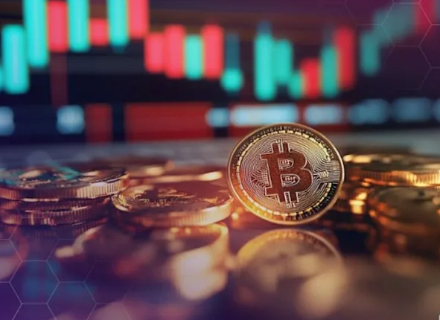Tech stocks, cryptocurrencies, gold, and even the bond market—there is no safe haven anywhere.
“Bitcoin falls below $93,700, erasing this year’s gains!” “Spot gold drops over 2% in a single day, falling below $4,100!””“The Nasdaq continues to decline, tech stocks under pressure!”.
Last week, global markets seemed to stage a synchronized diving performance. From cryptocurrencies to US tech stocks, from gold to US Treasuries, multiple asset classes experienced rare simultaneous declines. This synchronicity rendered traditional hedging strategies ineffective, leaving investors to wonder: Where is the capital flowing? What is the market worried about?
1,Synchronized Asset Declines: Both Risk and Safe-Haven Assets Hit
Last week, global markets witnessed a rare phenomenon—risk assets and traditional safe-haven assets declined simultaneously.
- The cryptocurrency market was hit first, with bitcoinonce dropping to $93,778.6,completely erasing the gains since the beginning of the year. This decline triggered massive liquidations, with over 150,000 people liquidated in the global crypto market within 24 hours.

- Meanwhile, US tech stocks also faced significant pressure. Although the Nasdaq rose slightly by 0.13% last Friday, this only reversed the previous three-day losing streak.Investor sentiment in tech stocks remains cautious, and concerns about overvaluation of AI concept stocks continue to ferment.

- Even more surprisingly, traditional safe-haven assets such as gold and US Treasuries also fell in tandem. Spot gold fell over 2% last Friday, breaking below the $4,100 mark; yields on US Treasuries of all maturities rose, with the 10-year yield at 4.148%, up about 2.9 basis points.The simultaneous decline of risk and safe-haven assets is an abnormal phenomenon, breaking the traditional logic of asset allocation.

2,US Treasuries Face Sell-Off: Market Signals from Rising Yields Across the Board
- The latest developments in the US Treasury market are particularly noteworthy. Not only did the 10-year Treasury yield rise to 4.148%, but the 2-year and 30-year yields also climbed to 3.606% and 4.749%, respectively. Thisacross-the-board upward yield curvesends a clear market signal:capital has not flowed en masse into US Treasuries, the traditional safe haven.
- The rise in Treasury yields is driven by a sharp shift in market expectations for Fed rate cuts. After a series of hawkish comments from Fed officials,the probability of a rate cut in December has fallen below 50%, now only 44.4%, while the probability of holding rates steady has risen to 55.6%.
- This change is quite significant—just a month ago, the market expected a 95% probability of a Fed rate cut in December.
- The cautious stance of Fed officials and a data vacuum have heightened market uncertainty. Some Fed officials are concerned about making decisions while “flying blind” on data, and after the US government shutdown ends, a large amount of delayed economic data will be released, including key indicators such as the nonfarm payroll report.
3,Safe-Haven Assets Fail: Why Have Gold and US Treasuries Lost Their Refuge Function?
- The simultaneous decline of gold and US Treasuries has drawn deep market attention. Historical data shows thatduring crises, asset correlations tend to approach 1.0,as investors sell profitable assets to cover margin calls. This phenomenon is similar to what happened during the 2008 financial crisis and the early days of the 2020 pandemic.
- Michael Armbruster, co-founder of futures brokerage Altavest, pointed out: “In the short term, as investors seek liquidity,gold may fluctuate in sync with other risk assets.”
- Adrian Ash, research director at BullionVault, further explained that in a “real crisis,” all asset correlations approach 1.0 because “traders losing money on one asset class need to cash out profitable positions to raise cash.”
- This is precisely why gold fell during the worst phase of the 2008 market crash and also plunged sharply at the onset of the 2020 COVID-19 panic. This time, US Treasuries were not spared either,as rising yields mean falling bond prices, indicating that US Treasuries also faced selling pressure.
4,The Mystery of Capital Flows: Defensive Stance and Regional Rotation
- Amid this global market volatility, capital flows have become complex. Risk assets have seen outflows, but traditional safe-haven assets have not become obvious beneficiaries. The crypto market has continued a large-scale deleveraging process that began on October 10,with the market facing overall position adjustment pressure.
- At the same time, US tech stocks are also experiencing capital outflows.Bridgewater’s third-quarter portfolio adjustment significantly reduced tech stock holdings, with its Nvidia position dropping sharply from 7.23 million shares at the end of Q2 to 2.51 million shares, a decrease of 65.3%.
- In contrast,Bridgewater significantly increased its holdings in US large-cap ETFs, with SPY holdings surging by 75.3%, reaching 4.05 million shares and accounting for 10.62% of the portfolio, making it the largest holding. Within tech stocks, capital is also being reallocated.Berkshire accelerated its sale of Apple stock in Q3 while building a position in Alphabet, Google’s parent company, spending $4.3 billion to acquire 17.85 million shares.
- On the regional level, Asian markets showed divergence.Japan’s Nikkei 225 and TOPIX indices both fell by 0.6%, while South Korea’s KOSPI index rebounded strongly, rising 1.7%, mainly driven by sharp gains in chipmakers SK Hynix and Samsung Electronics.
5,Key Data and Investment Strategies
- In the coming week, the market will focus on delayed economic data releases. The US Bureau of Labor Statistics has confirmed that the long-delayed September nonfarm payroll report will be released on November 20, and related data such as September real wages will be published on November 21. These data will be key references for the Fed’s December monetary policy decision.

- Frequent speeches by Fed officials will also affect market expectations. Core officials such as Williams, Kashkari, Goolsbee, and Logan will all speak, which may further shake interest rate expectations.
- For the cryptocurrency market, Bitunix analysts pointed out: “The core of the current market is not Beta returns, but pricing chaos amid a macro information vacuum.” “BTC is currently in a monthly structural correction phase, and the market is unlikely to have a clear direction before a large amount of delayed data returns.”
The long-term value of gold and US Treasuries may still exist. Adrian Ash pointed out that after the 2008 market crash and the early 2020 pandemic decline, gold “bottomed earlier than the stock market, rebounded more strongly, continued its long-term upward trend, and reduced overall portfolio losses.”
As the delayed US data is gradually released this week, including the September nonfarm payroll report, the market may find a new direction. But until then, no one can say the storm has passed. What investors can do, perhaps, is simply remain cautious and wait for the fog to clear.



